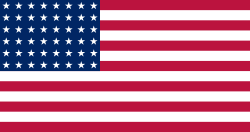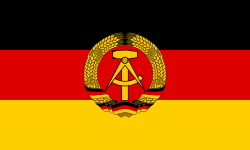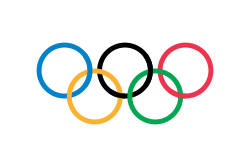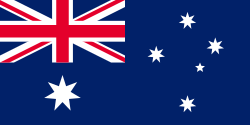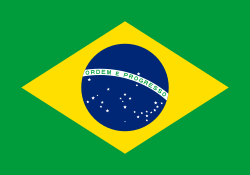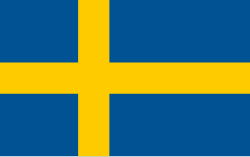Nick Hysong
| Nick Hysong | |||||||||||||
| Nation | |||||||||||||
| Geburtstag | 9. Dezember 1971 (51 Jahre) | ||||||||||||
| Geburtsort | Winslow | ||||||||||||
| Größe | 183 cm | ||||||||||||
| Karriere | |||||||||||||
|---|---|---|---|---|---|---|---|---|---|---|---|---|---|
| Disziplin | Stabhochsprung | ||||||||||||
| Bestleistung | 5,90 m Freiluft 5,85 m Halle | ||||||||||||
| Status | zurückgetreten | ||||||||||||
| Karriereende | 2013 | ||||||||||||
| Medaillenspiegel | |||||||||||||
| |||||||||||||
| |||||||||||||
Nick Hysong (* 9. Dezember 1971 in Winslow, Arizona) ist ein US-amerikanischer Stabhochspringer und Olympiasieger.
Bei den Weltmeisterschaften 1999 in Sevilla kam er mit 5,70 m auf den vierten Platz.
Bei den Olympischen Spielen 2000 in Sydney gewann er dann die Goldmedaille mit seiner persönlichen Bestleistung von 5,90 m. Ein Jahr später holte er bei den Weltmeisterschaften 2001 in Edmonton die Bronzemedaille, und bei den Weltmeisterschaften 2005 in Helsinki belegte er den fünften Platz.
Weblinks
- Nick Hysong in der Datenbank von World Athletics (englisch)
- Nick Hysong in der Datenbank von Olympedia.org (englisch)
- Athletenporträt bei USA Track & Field (Memento vom 12. Oktober 2008 im Internet Archive)
| Personendaten | |
|---|---|
| NAME | Hysong, Nick |
| KURZBESCHREIBUNG | US-amerikanischer Stabhochspringer und Olympiasieger |
| GEBURTSDATUM | 9. Dezember 1971 |
| GEBURTSORT | Winslow (Arizona) |
Auf dieser Seite verwendete Medien
Pictograms of Olympic sports – . This is an unofficial sample picture. Images of official Olympic pictograms for 1948 Summer Olympics and all Summer Olympics since 1964 can be found in corresponding Official Reports.
Autor/Urheber: B1mbo, Lizenz: CC BY-SA 2.5
Zeichnung einer Goldmedaille, basierend auf Olympic rings.svg.
Autor/Urheber: B1mbo, Lizenz: CC BY-SA 2.5
Zeichnung einer Silbermedaille, basierend auf Olympic rings.svg.
Autor/Urheber: B1mbo, Lizenz: CC BY-SA 2.5
Zeichnung einer Bronzemedaille, basierend auf Olympic rings.svg.
Olympic Rings without "rims" (gaps between the rings), As used, eg. in the logos of the 2008 and 2016 Olympics. The colour scheme applied here was specified in 2023 guidelines.
US Flag with 45 stars. In use 4 July 1896–3 July 1908. Created by jacobolus using Adobe Illustrator, and released into the public domain. This flag was used during the Spanish-American War.
US Flag with 45 stars. In use 4 July 1896–3 July 1908. Created by jacobolus using Adobe Illustrator, and released into the public domain. This flag was used during the Spanish-American War.
US Flag with 46 stars. In use 4 July 1908–3 July 1912. Created by jacobolus using Adobe Illustrator, and released into the public domain.
Other version: Image:US 46 Star Flag.svgUS Flag with 48 stars. In use for 47 years from July 4, 1912, to July 3, 1959.
Die Staatsflagge der Deutschen Demokratischen Republik, vom 1. Oktober 1959 bis 3. Oktober 1990
Flag of Second Polish Republic and later People's Republic of Poland in period from March 29, 1928 to March 10, 1980. Red shade used here is HTML "vermilion" #E34234. Proportion 5:8.
Olympische Flagge
Flag of Australia, when congruence with this colour chart is required (i.e. when a "less bright" version is needed).
See Flag of Australia.svg for main file information.US Flag with 44 stars. In use 4 July 1891–3 July 1896. Created by jacobolus using Adobe Illustrator, and released into the public domain.
US Flag with 46 stars. In use 4 July 1908–3 July 1912. Created by jacobolus using Adobe Illustrator, and released into the public domain.
Other version: Image:US 46 Star Flag.svgFlag of Second Polish Republic and later People's Republic of Poland in period from March 29, 1928 to March 10, 1980. Red shade used here is HTML "vermilion" #E34234. Proportion 5:8.











